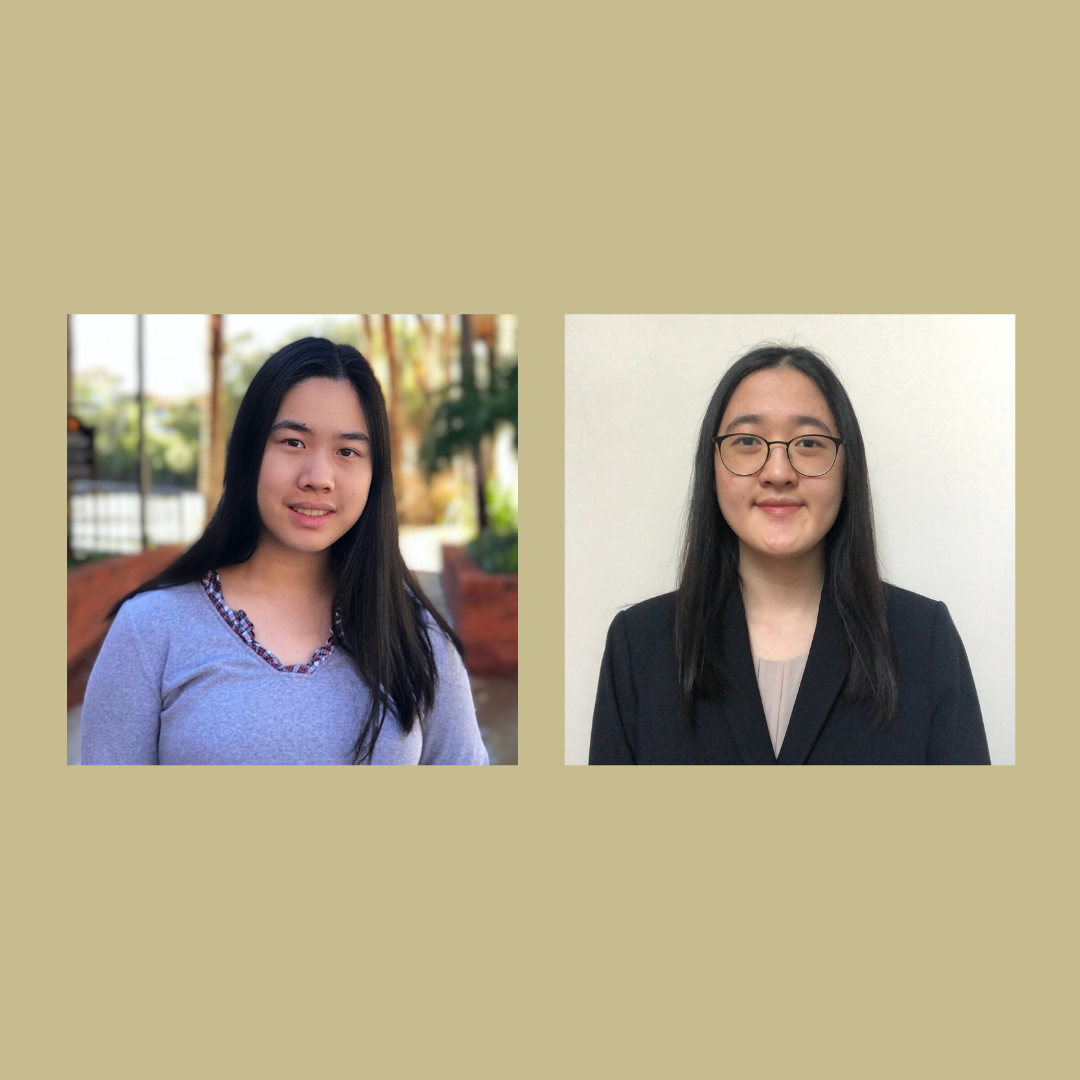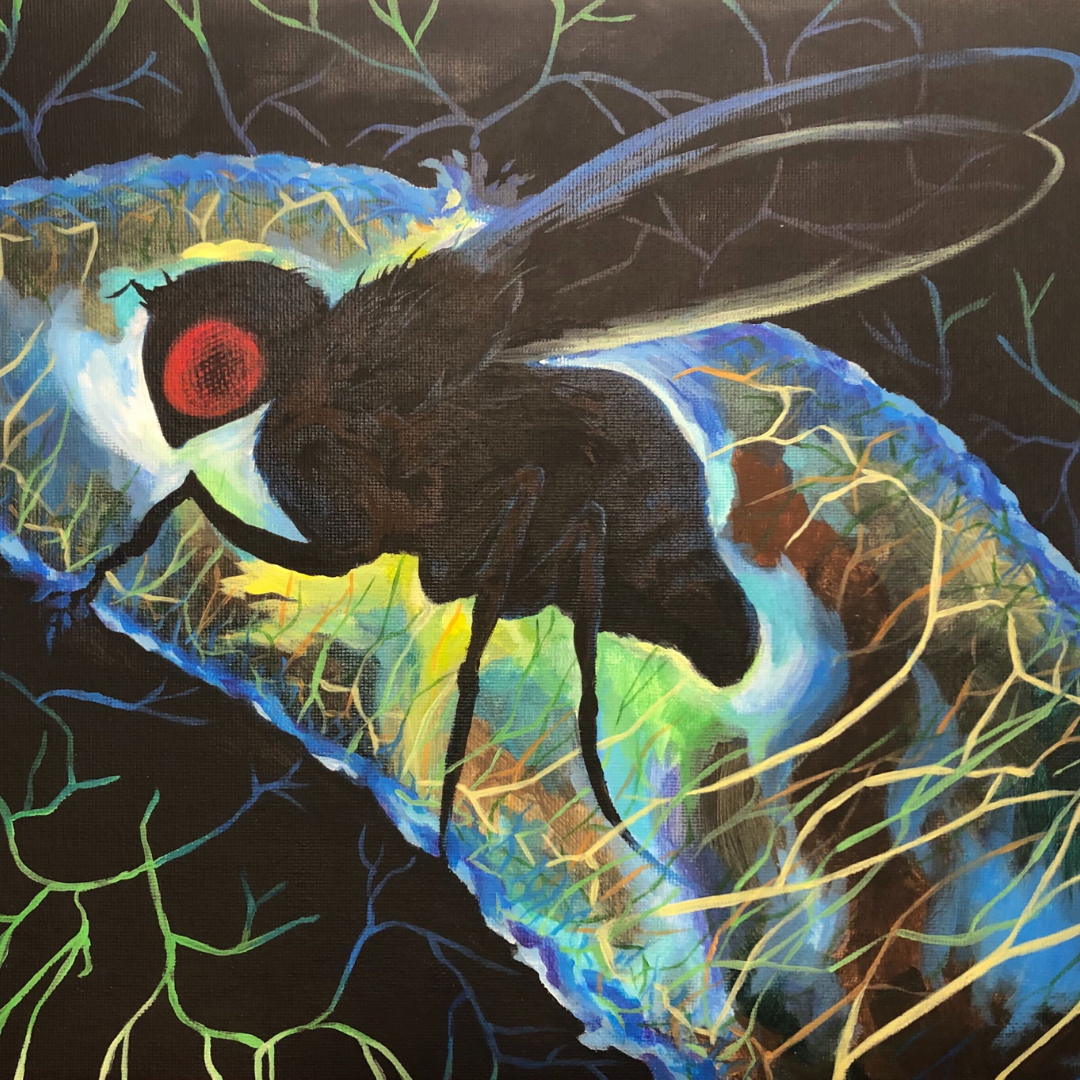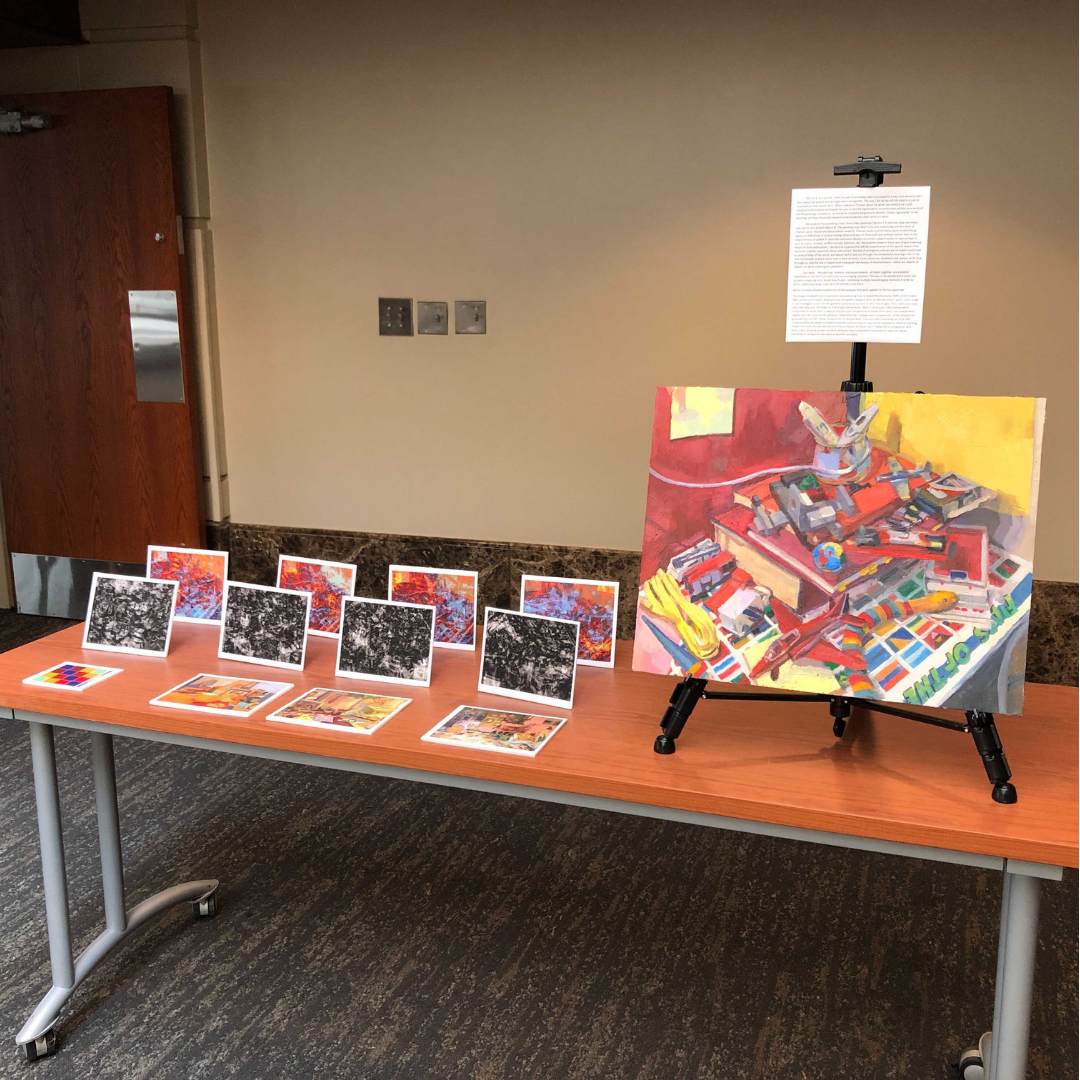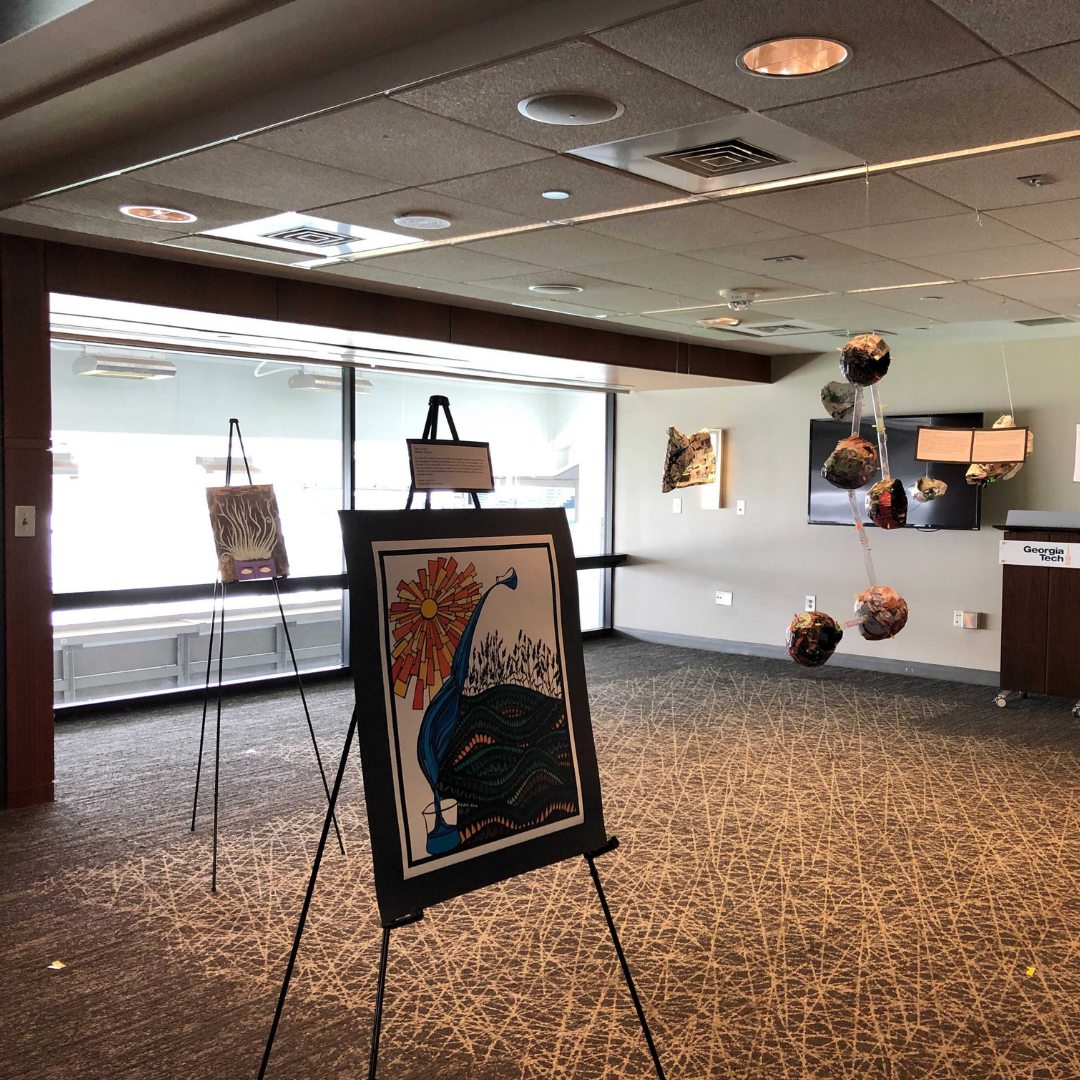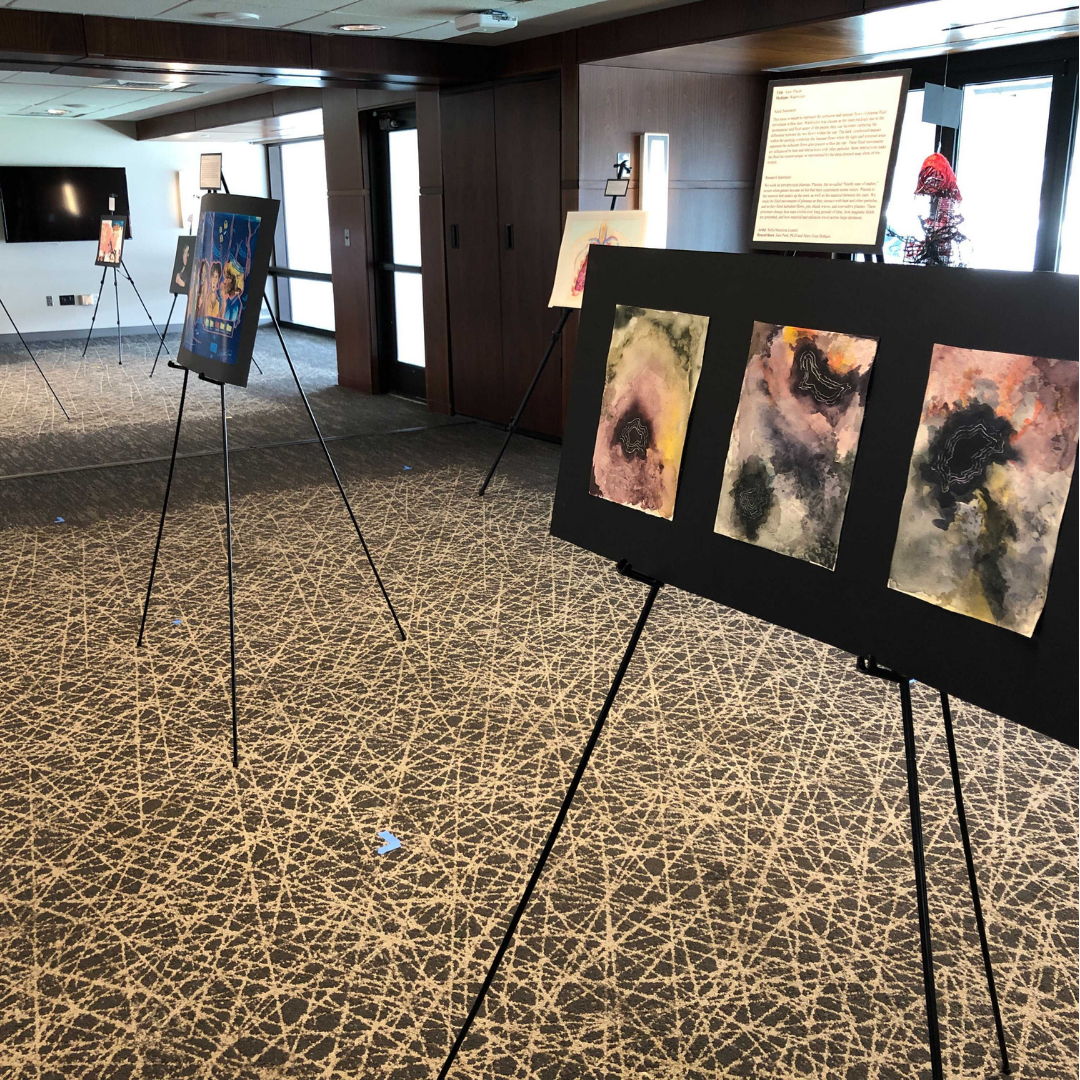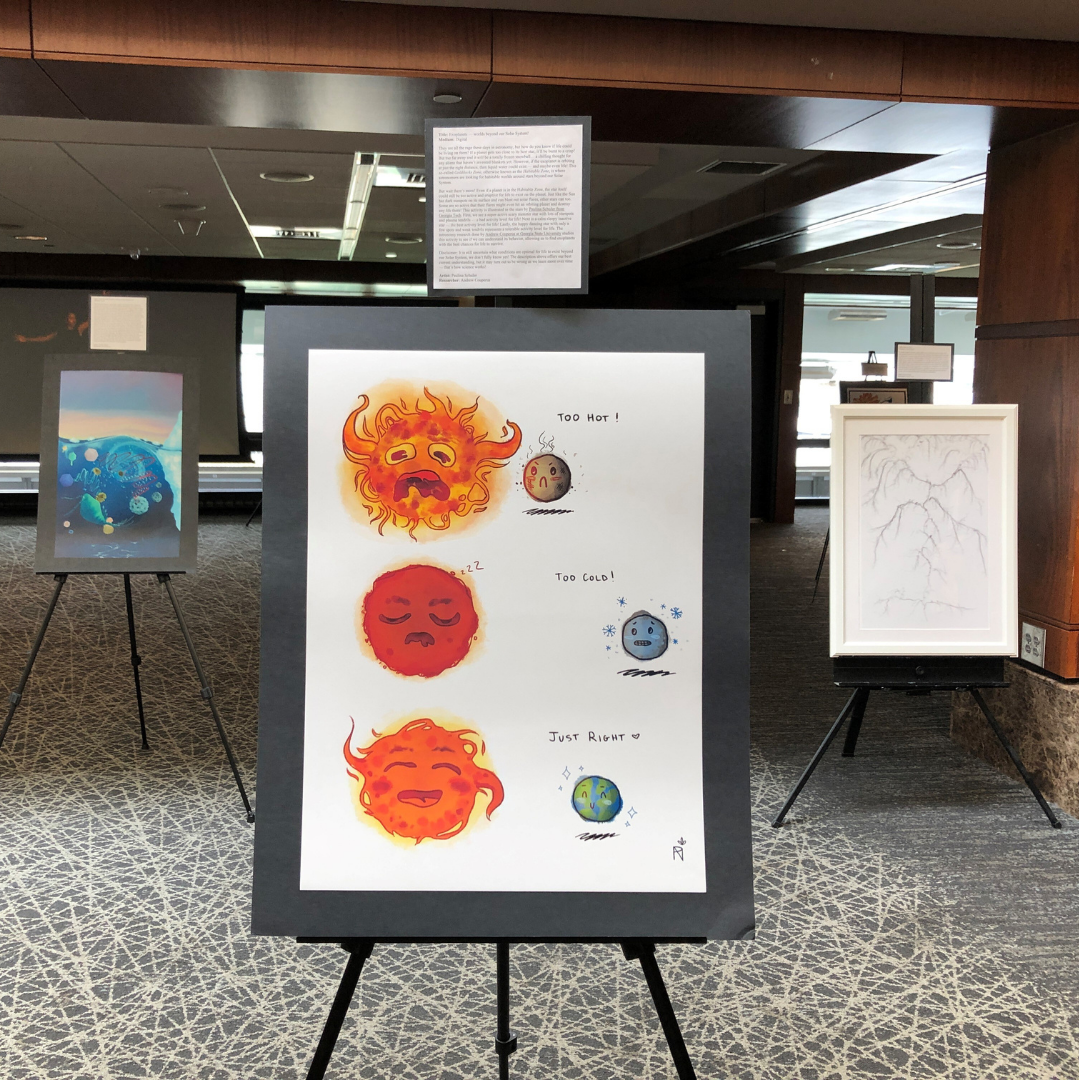Rising fourth-years in the H. Milton Stewart School of Industrial and Systems Engineering (ISyE) Rayen Kang and Daisy Zhou both grew up taking art lessons. When they came to Georgia Tech, they wanted to find a way to continue their passion for art. This is how Rayen and Daisy became Science.Art.Wonder’s (SAW) president and artist/research coordinator, respectively. In the following Q&A, Rayen and Daisy share their thoughts on the impact of combining art and science through SAW.
Briefly tell us about SAW and its mission.
RK & DZ: As a student organization at Georgia Tech, Science.Art.Wonder’s mission is to support interdisciplinary inquiry, promote science education, and connect scientists with the public. We strive to create opportunities for students to explore scientific fields that are of interest to them by involving them with the research done at both Georgia Tech and the greater Atlanta area. We also work to increase recognition and understanding of our researchers by promoting their work through various forms of art. Each year, we pair artists and researchers together so they can collaborate on an art piece -- such as a sculpture, movie, or painting -- that reflects the researcher’s work.
Why did you get involved in SAW?
RK: I joined Science.Art.Wonder because I thought it was really interesting that its activities combined the two vastly different fields, STEM and art, and I was curious to find out how it worked.
DZ: In high school, I was focused only on STEM, so when I looked at organizations to join in my second year at Georgia Tech, I became interested in how Science.Art.Wonder combines the arts with STEM -- which I had always considered as two separate fields.
Georgia Tech is a STEM-heavy campus. How do the arts contribute to the STEM environment (i.e., STEAM)?
RK: SAW’s activities introduce an artistic side to campus, like a gateway. Many STEM-oriented people relate more to the topics they study, so even those who typically aren’t interested in art find themselves drawn to the scientific backgrounds of the artwork our members create.
DZ: While research is presented in the form of academic journals and papers, this work may not be as easy to understand from the public’s perspective. Art, however, as a visual form of communication, can help convey complex ideas and concepts discovered through research.
Briefly describe your own involvement in the arts (pre-Georgia Tech) and how that has carried over to your college experience.
RK: I had been taking art lessons outside of school for almost 10 years and occasionally taught kids how to draw. When I came to Georgia Tech, I realized that there are quite a lot of people here who enjoy art, though it takes some searching to find these communities. Now that I’ve found them, I’m glad I can still continue my hobby with my fellow classmates here.
DZ: I also had taken art lessons since I was little but stopped when I was in high school. After coming to Georgia Tech, I realized how much I missed being immersed in the arts, so I decided to join Science.Art.Wonder. While I have not participated in any projects through SAW myself, I occasionally like to draw in my free time.
What projects have you personally done as part of SAW?
RK: I participated in SAW as an artist last year in the annual art and research collaboration. SAW introduced me to a graduate student from Georgia State University who researched dendrite development in fruit flies, and after we discussed her research throughout those few months, I created a piece inspired by the images she showed me from her lab. It was an exciting experience, being able to connect with the researcher and learning about current neuroscience research topics.
Is there anything else you'd like students to know about SAW and its initiatives?
RK: Many people who pursue STEM careers still enjoy the arts — we know this and try to offer a way for people to connect these interests together through our organization. SAW also provides a great opportunity to get to know both researchers and artists at Georgia Tech, so we welcome anyone who is interested in art and science to join us and take advantage of that.
DZ: There also aren’t many opportunities for students to learn about the research being done at Georgia Tech, outside of working as research assistants or personally reaching out to professors. Every year, we host a showcase both on-campus and at the Atlanta Science Festival so that not only students but also the entire Atlanta community can get a behind-the-scenes look at the research that Georgia Tech’s faculty members and graduate students are working on.
